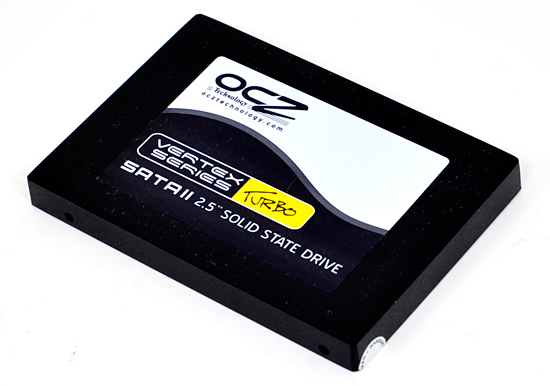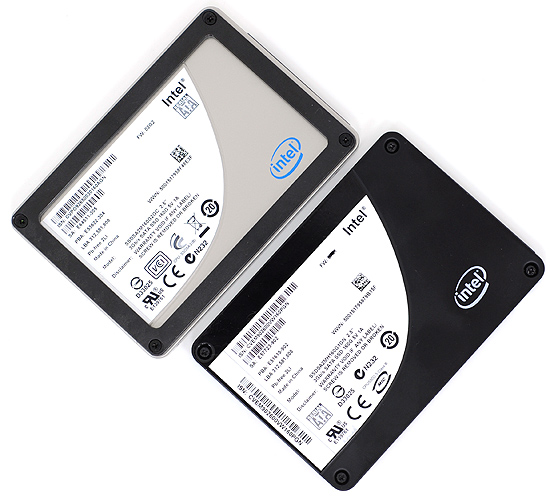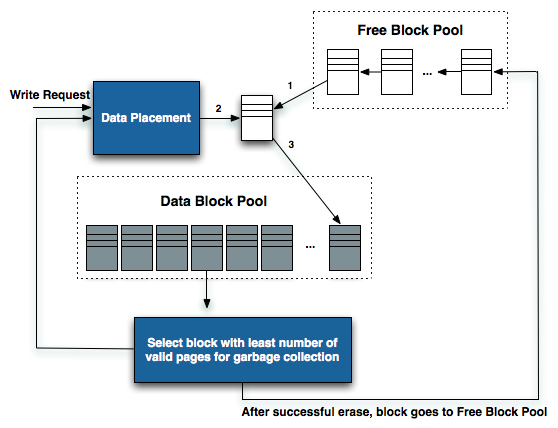The SSD Improv: Intel & Indilinx get TRIM, Kingston Brings Intel Down to $115
by Anand Lal Shimpi on November 17, 2009 7:00 PM EST- Posted in
- Storage
Update 2: Intel has given us an updated timeframe on a fixed version of its TRIM firmware. Intel will release the new firmware by the end of November 2009. More info here.
Update: Some users have had issues with Intel's TRIM firmware bricking their drives, Intel has since pulled the firmware while they figure out what's going on. If you've downloaded it but haven't updated, do so at your own risk. While we haven't had any issues on the three drives we've updated here others have had problems. We'll keep you posted. Intel's official statement is below:
“Yes, we have been contacted by users with issues with the firmware upgrade and are investigating. We take all sightings and issues seriously and are working toward resolution. We have temporarily taken down the firmware link while we investigate.”
Welcome to the anti-climax. After a year of talking about it, Windows 7 and TRIM are here. How does it feel to be a TRIMionaire?

Indilinx, as usual, was first. After a couple of false starts, the two tier 1 Indilinx partners (SuperTalent and OCZ) enabled TRIM on their Barefoot SSDs (OCZ Vertex, SuperTalent UltraDrive). OCZ calls its TRIM firmware 1.40 while SuperTalent calls it 1819. Update:As many of you have correctly pointed out, Crucial also has an 1819 update available for its SSDs. You can get the firmware for your drive from the links here:
| TRIM Firmware Download | |
| Crucial | M225 1819 |
| SuperTalent | UltraDrive GX 1819 |
| OCZ | Vertex /Agility 1.40 |
Intel held off to align with the release of Windows 7. Last week Windows 7 officially went on sale, and today Intel is delivering on its promise: this bootable iso will enable TRIM on X25-M G2 drives.

Only the X25-M G2 gets TRIM, the G1 (right) is left in the dust. The G1 is more resilient than the G2 when it comes to performance degradation over time since it doesn't have TRIM.
Alongside TRIM there’s one more surprise. If you own a 160GB X25-M G2, Intel boosted sequential write speeds from 80MB/s to 100MB/s:

The 80GB drives remain unchanged unfortunately. Intel still won’t tell us why write speeds are so low to begin with.
What TRIM Does
Before we get much further, and without diving into a complete rehash of how SSDs work (which I’ve done here, here and here again), I want to do a quick refresher on TRIM.
SSDs are made up of millions of NAND flash cells. They can be written to in groups called pages (generally 4KB in size) but can only be erased in larger groups called blocks (generally 128 pages or 512KB). These stipulations are partially the source of many SSD performance issues.
The whole ordeal gets more complicated when you realize that an SSD has no way of knowing when a file is deleted. Until an address gets used again, the SSD has to keep track of every last bit of data that’s written to it. The ATA-TRIM instruction tilts the balance in favor of the SSD.
In a supported OS (e.g. Windows 7), whenever you permanently delete a file or format your drive, the addresses that are erased are sent along with the TRIM command to the SSD’s controller. The TRIM instruction tells the SSD that those locations don’t contain valid data and that it no longer has to track them.

Simplified version of how a SSD controller works. TRIM helps the SSD clean blocks and add them to the free block pool
Again, I won’t go into great detail here but TRIM addresses a major part of the performance degradation over time issue that plague all SSDs. A TRIM enabled drive running an OS with TRIM support will stay closer to its peak performance over time.










162 Comments
View All Comments
Anand Lal Shimpi - Monday, October 26, 2009 - link
Personally my pick is still the X25-M, it's had a better track record than any of the other controller makers. The problem for Intel is that Indilinx performance and feature set have both gotten a lot better.You now get TRIM, reliable performance, competitive pricing and generally everything but a super dynamic controller that's constantly trying to maximize performance. Depending on the usage scenario though, the latter may not matter as much (see my Photoshop results from the last review or the heavy trace results from this review).
My position hasn't really changed, just highlighting the importance of the issue so that hopefully Intel's value SSDs next year aren't just rebadged G2s :)
Take care,
Anand
7Enigma - Monday, October 26, 2009 - link
I think his previous review is consistent with this one. His ultimate recommendation between Intel and Indlinx drives has remained unchanged. That is, they are close enough that the size differences should be the decider for a potential buyer.As it stands, in most normal usage scenarios the statement from his last article still applies. There are very few times where you are going to be constantly tapping the 80MB/s barrier. More often you will be limited by the other SSD's lower random write speeds.
What his own benchmark can show is that in uncommon circumstances you can sway the bar back towards parity between the brands. I would argue, however, that the "heavy" usage scenario is not a practical one for an SSD. Just read his description again and look for all of the places the average user would NOT be putting that data onto an SSD:
[quote]
In this test we have Microsoft Security Essentials running in the background with real time virus scanning enabled. We also perform a quick scan in the middle of the test. Firefox, Outlook, Excel, Word and Powerpoint are all used the same as they were in the light test. We add Photoshop CS4 to the mix, opening a bunch of 12MP images, editing them, then saving them as highly compressed JPGs for web publishing. Windows 7’s picture viewer is used to view a bunch of pictures on the hard drive. We use 7-zip to create and extract .7z archives. Downloading is also prominently featured in our heavy test; we download large files from the Internet during portions of the benchmark, as well as use uTorrent to grab a couple of torrents. Some of the applications in use are installed during the benchmark, Windows updates are also installed. Towards the end of the test we launch World of Warcraft, play for a few minutes, then delete the folder. This test also takes into account all of the disk accesses that happen while the OS is booting.
The benchmark is 22 minutes long and it consists of 128,895 read operations and 72,411 write operations.
[quote]
How many people are going to be opening photoshop pictures FROM the SSD and saving them TO the SSD? Same goes with Windows Picture Viewer. Most people will have their pics on a standard large mechanical HD which makes this a moot point. Downloading large files from the net? Not a chance that would be going to my SSD! Bottom line is this is a great HELL test, but nowhere close to real-world usage.
The light-usage probably fits 90% of people 90% of the time (completely made up statistic).
With all of that said, I wish Intel's 80gig drive had closer sequencial write performance as the Indilinx drives, as it would make the decision a complete no-brainer. Looking at all the data, and planning on buying a ~$250 drive this holiday season has me very likely picking up an 80gig Intel as for me the price is about as steep as I'm willing to go for essentially a boot drive, with performance that for the majority of the time is at the top of the pack. It would be WAYYYY more difficult to decide if both Intel/Indilinx had the same drive sizes but fortunately we don't have to worry about that (at least for now....)
tynopik - Monday, October 26, 2009 - link
on page 7, all the graphs have two lines labelled 'Intel X25-M G2 80GB (MLC) TRIM'7Enigma - Monday, October 26, 2009 - link
Anand,You have listed the 80gig Intel MLC drive twice in each chart. I'm assuming one of them shouldn't say (TRIM)?
Other than that, GREAT article! Those Kingston drives look to be the PERFECT inexpensive replacement for netbooks/cheaper laptops as the performance is vastly superior to cheap mechanical HD's.
Anand Lal Shimpi - Monday, October 26, 2009 - link
That second 80GB MLC drive was actually a second set of results that didn't get pulled out. I've trimmed em out :)Take care,
Anand
fic2 - Monday, October 26, 2009 - link
"The G1 is more resillient (SIC) than the G2 when it comes to performance degradation over time since it doesn't have TRIM."Is it just me or does this sentence make no sense? I thought the whole purpose of TRIM was to make the SSD more resilient to performance degradation. Seems like it should be:
"The G1 is less resilient..."
klil - Monday, October 26, 2009 - link
The G1 is LESS susceptible to degradation than the G2, Intel compensates this by enabling TRIM on the G2.Anand Lal Shimpi - Monday, October 26, 2009 - link
Correct, my apologies for the confusing wording :)Take care,
Anand
edzieba - Monday, October 26, 2009 - link
"None of the other Indilinx manufacturers have Windows 7 TRIM support yet."Crucial has the TRIM firmware (1819) available for download for their m225 series SSDs.
TheWickerMan - Monday, October 26, 2009 - link
I was just going to post that, but you beat me to it. Here's the link for anyone else interested: http://www.crucial.com/support/firmware.aspx">http://www.crucial.com/support/firmware.aspx